High-Frequency Wands Are One of the Buzziest Skincare Tools Right Now—Here's What They Do
One editor consults the experts to learn more about high-frequency wands and how they can benefit the skin.
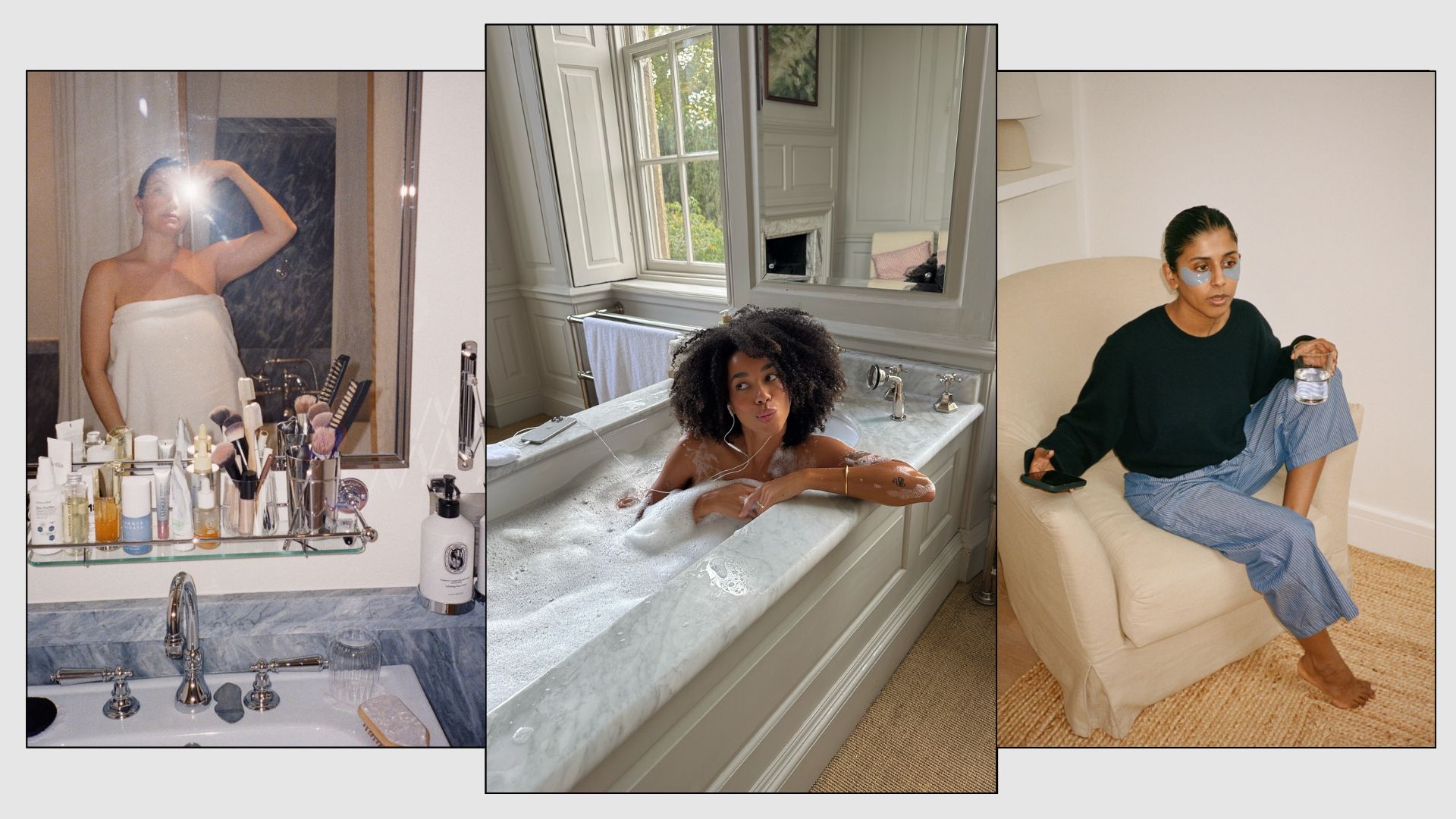

Another day, another skincare tool to sink our teeth into. There are numerous devices available right now, from LED masks to microcurrent facial tools. Still, it's a high-frequency wand that has captured my attention more than any of these this month, mainly because I am totally new to the subject and had no idea what this tool could do.
Not only that, but it seems that they are causing quite a buzz in the beauty world. Since learning more about them, I'm shocked I hadn't tried one sooner. Below, I spoke to the experts to get answers to all my burning questions, before rounding up the best high-frequency wands on the market. Keen to learn more? Just keep on scrolling.
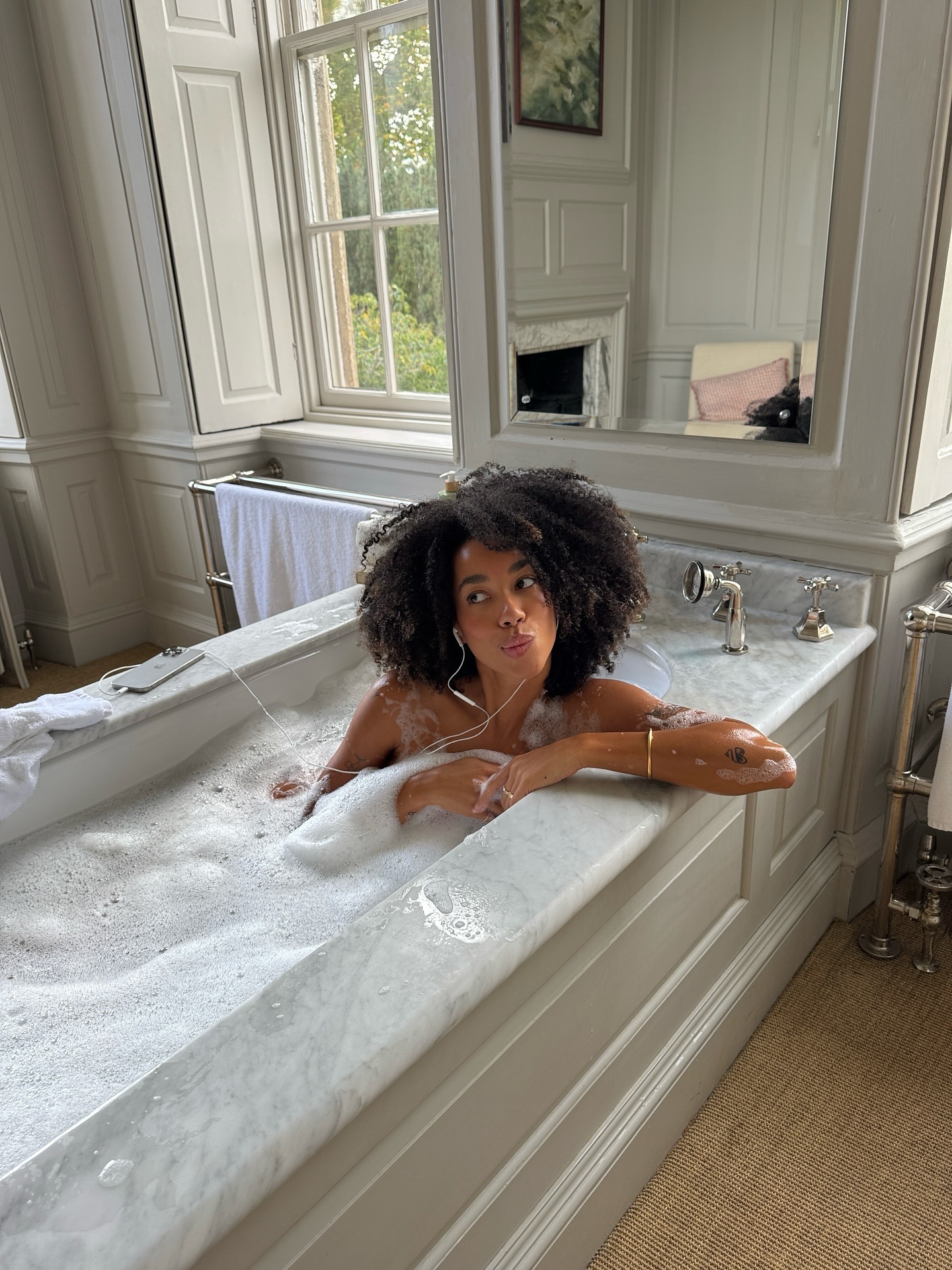
What Is a High-Frequency Wand?
So, what is this beauty tool? "A high-frequency wand is a glass electrode device used in professional skincare treatments to deliver a mild electrical current to the skin," explains esthetician, beauty editor and Who What Wear contributor, Grace Day. "When the electrode is activated, it emits a subtle glow (usually purple or orange, depending on the type of gas inside) and a gentle buzzing sensation. This current helps oxygenate the skin, support healing, and create an environment that reduces acne-causing bacteria. My high-frequency wand is one of my favourite tools to use in facials because it offers a non-invasive way to energise the skin, improve circulation, and very quickly take down breakouts."
How Does a High Frequency Wand Work?
As mentioned, high-frequency wands work through a combination of electrical and gas-based reactions. "Inside each glass electrode is either neon or argon gas," says Day. "When electricity passes through the gas, it ionises and emits light—orange from neon, purple from argon. As the electrode glides across the skin, the current oscillates at high speed, producing a mild warming effect and generating oxygen molecules on the skin’s surface. These oxygen molecules convert to a small amount of ozone, which has antibacterial properties. At the same time, the thermal stimulation increases circulation, encouraging nutrients to move toward the skin while supporting detoxification through lymphatic flow."
A post shared by SKIN GYM (@skingymco)
A photo posted by on
What Skincare Concerns Can They Help With?
You might be wondering, what benefits will adding a high-frequency wand to my skincare routine have? As you can probably guess from the info above, these tools can be great for acne-prone or congested skin. "It’s [also] a great pre-event treatment because it can reduce the inflammation of a breakout in a matter of hours," Day tells me. "It’s also beneficial for dull or sluggish skin thanks to the increased blood flow, which delivers more oxygen and nutrients to the cells—many clients notice improved radiance and a 'post-facial glow' due to this boost in microcirculation."
Can They Work for All Skin Types?
Whilst these tools can be used on a range of skin types, Day tells me that they are not universally suitable. "Clients with highly sensitised skin, rosacea, advanced vascular conditions or a compromised skin barrier may experience irritation from even gentle electrical stimulation," she says. "However, for those with combination, oily or acne-prone skin, it can have a huge benefit."
How to Use a High Frequency Wand
"In a professional setting, I use high frequency as a targeted step within a facial, typically after extractions," says Day. While Day wouldn’t usually recommend at-home use (you’re working with fragile glass, gases, and an electrical current, after all), there are now some devices on the market that can be used as part of your at-home skincare routine. Always read the instructions carefully beforehand and consult a doctor or dermatologist to determine if this tool is suitable for you before making a purchase.
"To use a high-frequency wand, start with a clean and dry face," says Dr Raj Arora, NHS doctor and key opinion leader for Foreo. "Apply a conductive gel or serum as needed, then turn on the device and gently glide the wand across your skin in circular motions. It's important to follow the manufacturer's instructions for optimal use, typically for 5-10 minutes per session."
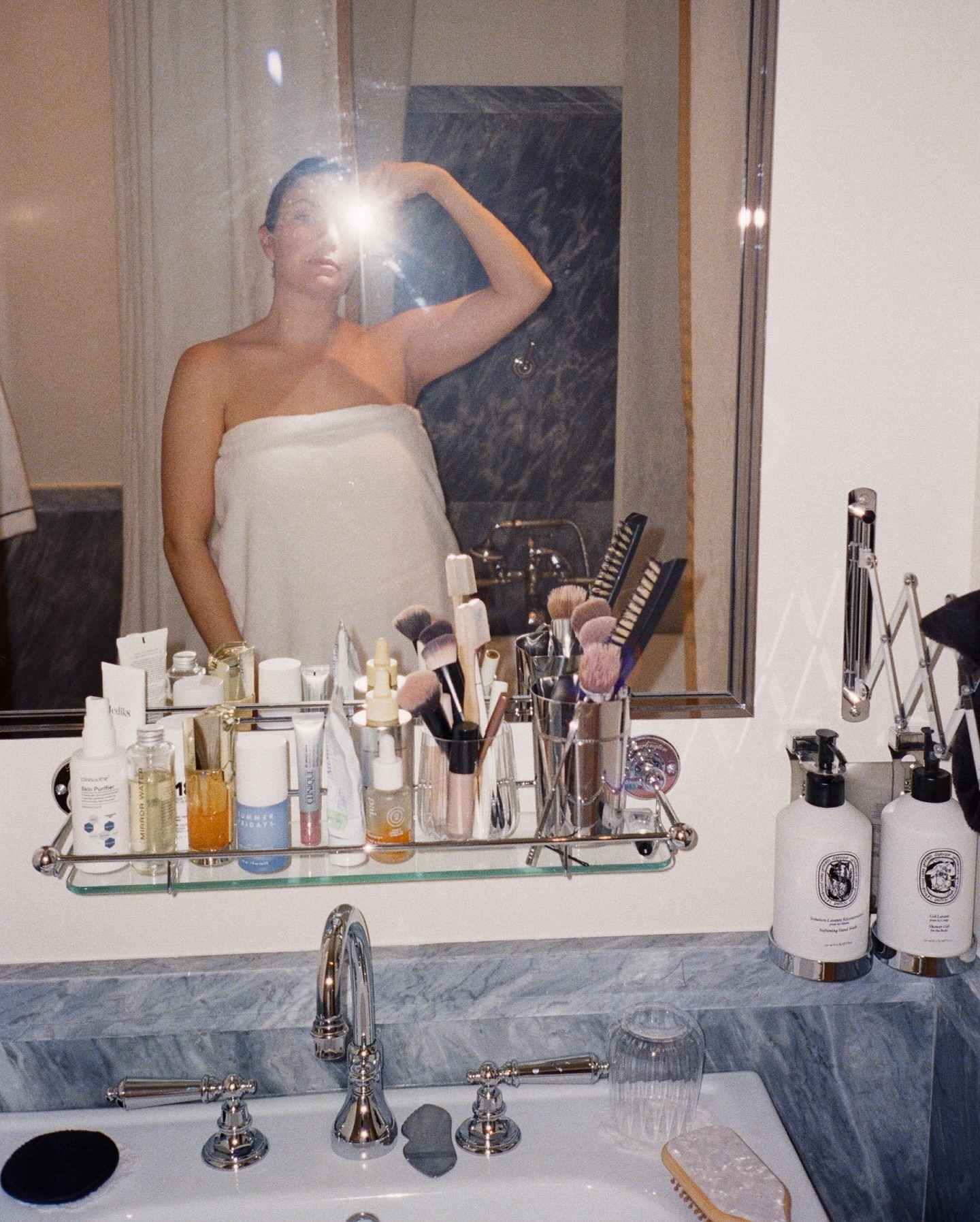
High Frequency Wands vs. LED Masks
Something I kept asking myself while researching this tool was, What's the difference between a high-frequency wand and an LED mask? "The primary difference is in the technology and their targeted skin concerns," explains Dr Arora. "High-frequency wands use electrical currents to stimulate circulation and cell renewal, while LED devices use light wavelengths to help treat various skin issues, such as acne and signs of aging. LED devices are usually less intense and are used more for light therapy, targeting specific issues such as inflammation or collagen production. [Some] savvy skin devices actually combine both modalities so that you can get the benefits of both. It’s important to remember that each device has its benefits, and the choice depends on your specific skin concerns and preferences."
Shop the Best High-Frequency Wands
- Best high-frequency wand overall: Skin Gym High Frequency Wand, £99
- Best affordable high-frequency wand: Project E Beauty High Frequency Facial Machine, was £59, now £45
- Best for breakouts: ZIIP Dot, £170
1. Skin Gym High Frequency Wand
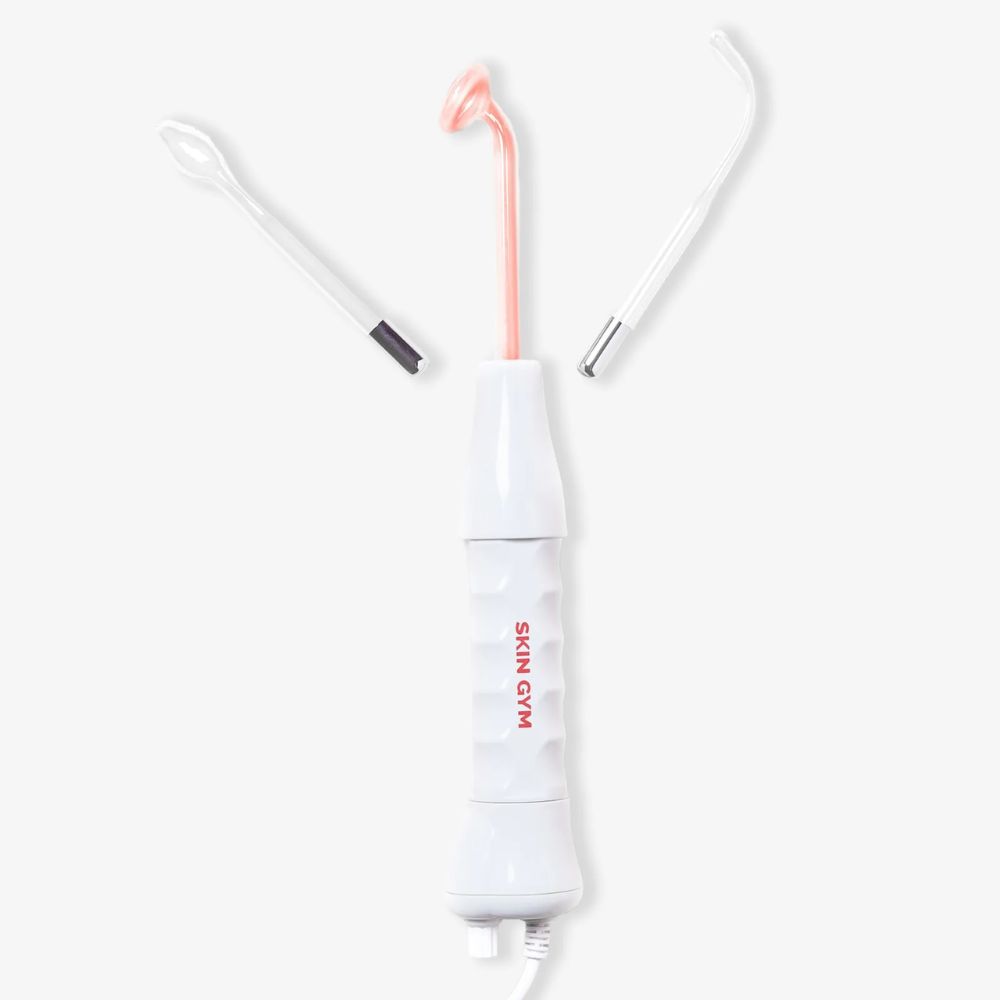
Number of attachments: 3
Gas types: Neon gas (red-orange) and argon gas (blue-purple)
First up is this highly impressive high-frequency wand from Skin Gym. Boasting three different attachments and two different gas types, this tool uses neon gas (red-orange) to stimulate collagen production, whilst argon gas (blue-purple) works to destroy acne-causing bacteria and reduce inflammation. The best part is that you only need to move the wand in circular motions over your desired area for 1-3 minutes, making it an easy tool to fit into your routine.
Pros
- Offers 3 different attachments and two gas types
- Short treatment time
Cons
- Can take a little while to get used to
2. Foreo FAQ 101

Number of attachments: N/A
Gas types: N/A
If you're looking for a sophisticated, slightly non-traditional high-frequency wand, this tool from Foreo is a great choice. As explained to me by Dr Arora, this wand combines radiofrequency and red light therapy to help tone muscles, tighten skin, boost microcirculation (thanks to the bonus T-Sonic massage function), and reduce the appearance of fine lines. While it doesn't utilise gas-based reactions, it does use low-energy waves to heat the deep skin layer, stimulating the production of collagen and elastin. It also comes with green, blue and red LED settings to brighten the skin and reduce the appearance of breakouts.
Pros
- Focuses on a wide range of skin concerns
- Combines different technologies for an impressive at-home device
Cons
- Not your typical high frequency wand tool
- A little more expensive
3. Project E Beauty High Frequency Facial Machine
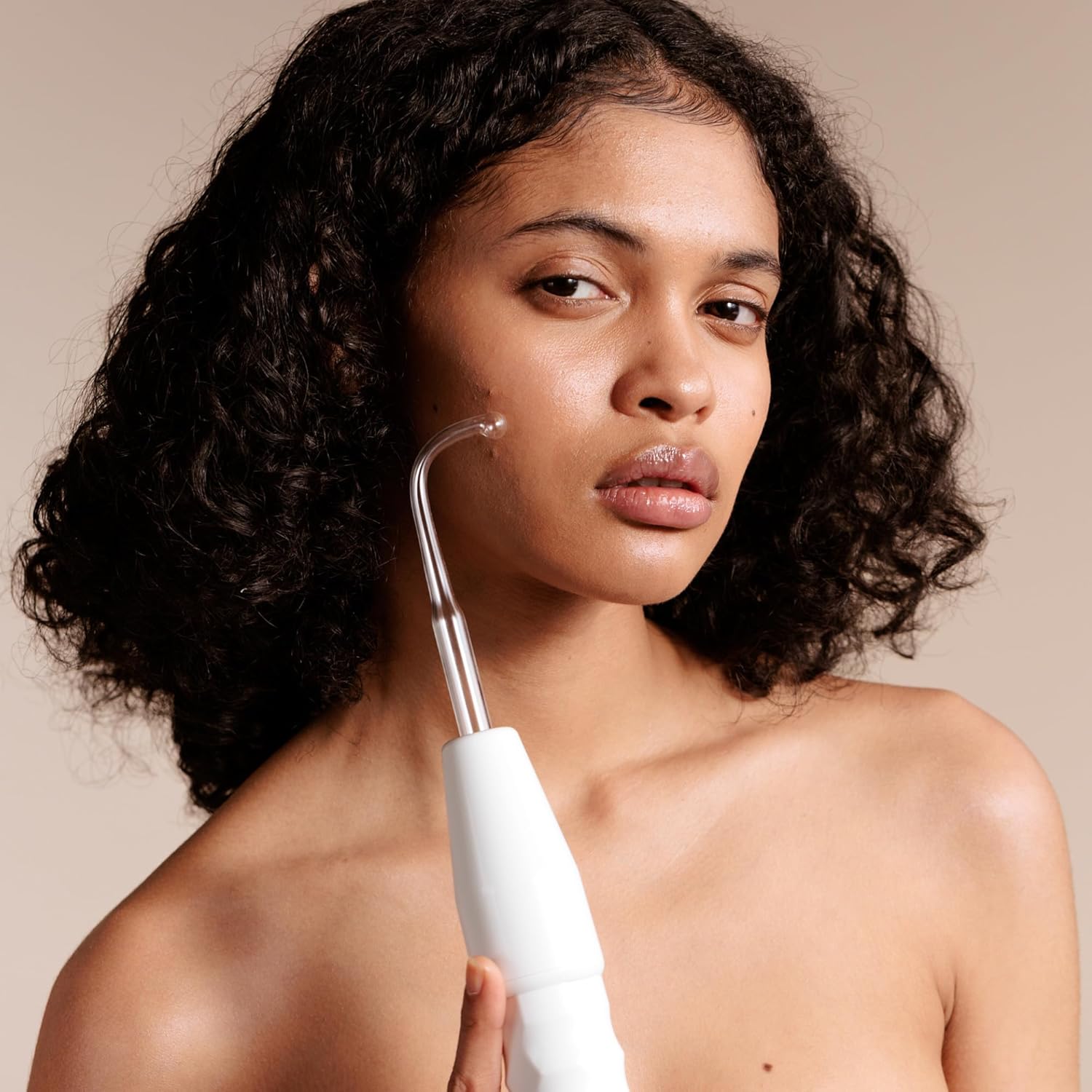
Number of attachments: 6 (4 orange and 2 purple)
Gas types: Neon and argon
This is one of Project E Beauty's bestselling products, and I can see why. Boasting neon and argon gas, as well as 6 different attachments, it's an impressive at-home tool, especially considering the price. The only downside to this one is that it has a slightly longer treatment time compared to the Skin Gym tool. For beginners, the brand recommends using it for around 10 minutes, 3 times a week.
Pros
- One of the more affordable models
- Lots of different attachments
Cons
- Slightly longer treatment time
4. Ziip Dot
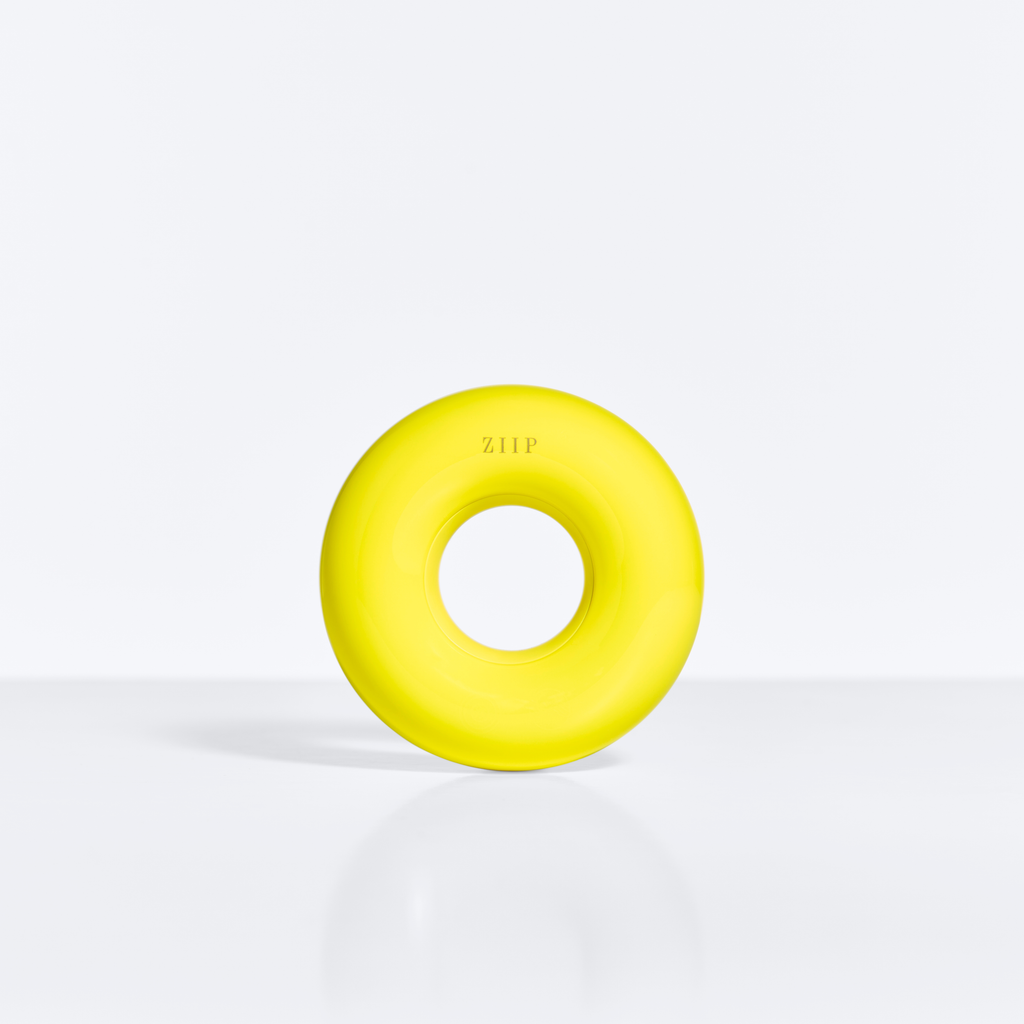
Number of attachments: N/A
Gas types: N/A
Okay, this is not your typical high-frequency wand, but it does boast some similar benefits. If breakouts are your concern, the Ziip Dot has you covered. This clever skincare device uses microcurrent to reduce inflammation and swelling, and nanocurrent to mimic your body's natural electrical currents, helping to encourage skin cell renewal and repair. All you have to do is apply the conductive gel to the treatment area, press the power button and apply the small, donut-shaped device to the skin. You must move it back and forth during the treatment. After a minute, the tool will switch from 'treat' mode to 'calm' mode, which lasts 30 seconds, resulting in a total treatment time of just 90 seconds.
Pros
- Short treatment time
- Good for breakouts and blemishes
Cons
- More expensive
- Quite different to a high frequency wand
5. BeautyPro LED Wand Device
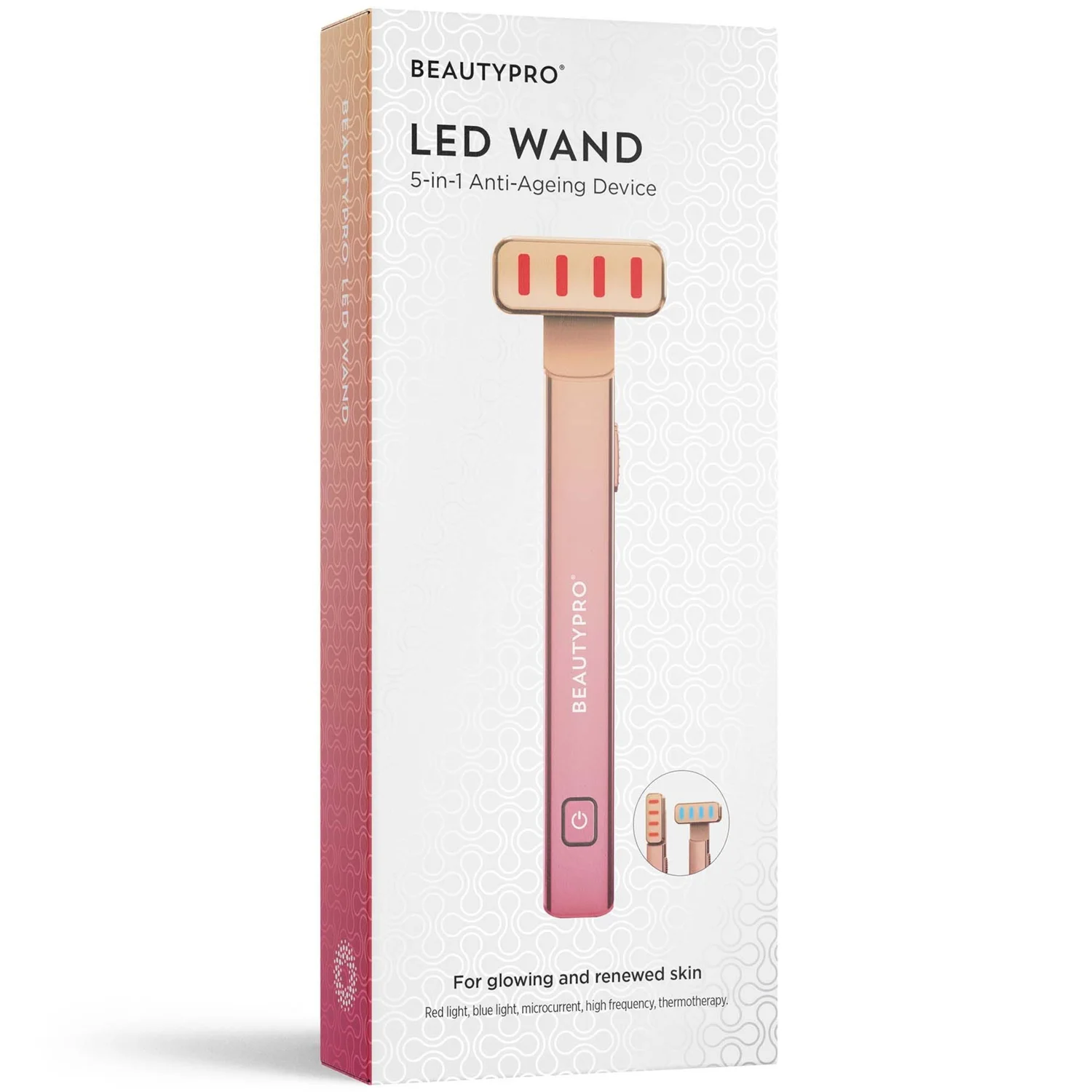
Number of attachments: N/A
Gas types: N/A
Last but by no means least, let's talk about the BeautyPro LED Wand Device. Again, this isn't your typical high-frequency wand, but it does utilise high-frequency sonic vibrations to massage the skin. Not only that, but it features red light therapy and EMS microcurrent technology to help address a range of concerns, including fine lines and puffiness. No, it might not tackle those pesky breakouts, but if you use it consistently, you're sure to have a plump, glowing complexion. Plus, the compact design makes it ideal for travelling.
Pros
- Small size makes it easy to use and travel with
- Addresses multiple skincare concerns
Cons
- Won't help with breakouts or blemishes
Why Trust Us
At Who What Wear UK, we know that beauty isn’t one-size-fits-all. Our editors have tested thousands of products, including skincare, makeup, hair and nails, over the years and work closely with trusted experts—dermatologists, make-up artists and leading industry insiders—to ensure every guide is well-researched, inclusive and relevant to you.
We focus on formulas that deliver, whether they’re affordable favourites or luxury investments. Our product selection is based on tangible results, ingredient know-how and what we’d truly recommend to a friend.

Grace Lindsay is the junior beauty editor at Who What Wear UK. At the age of 18 she decided to train as a makeup artist before going on to study english and media at Goldsmiths University. It was during that time that she explored her love for journalism by interning at a small beauty start-up based in Shoreditch. Since then, she has worked at a number of publications including Marie Claire and Hello!, where her love for all things beauty continued to grow.
As Who What Wear UK's junior beauty editor, she covers everything from the latest hair trends to the stand-out makeup products of the season.


